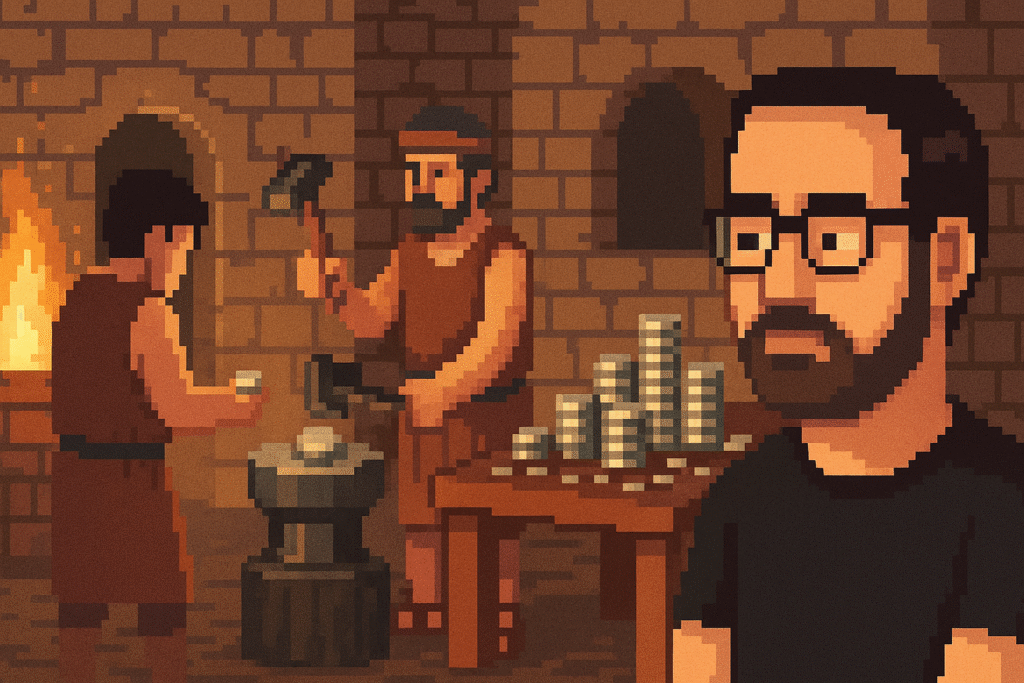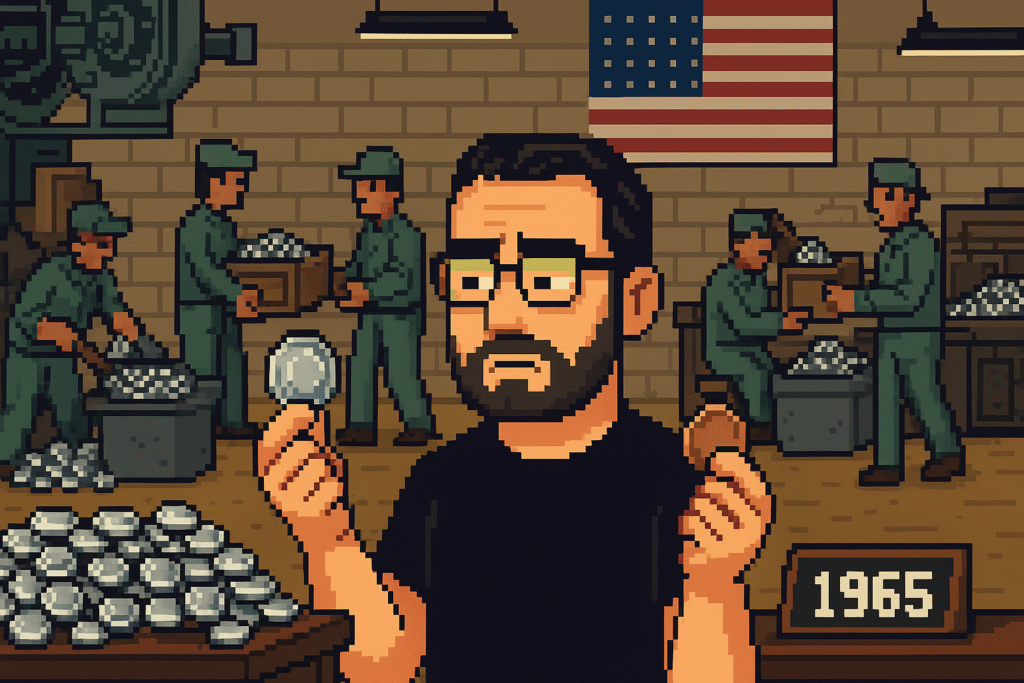Reading time: 5 min
Somewhere along the way, people decided that real money should be paper, plastic, or pixels. Which is hilarious, because for most of human history, money was a shiny piece of metal that actually meant something.
And out of all those metals, silver is the one that refuses to die.
It’s the poor man’s gold, the secret ingredient in your gadgets, and one of the last physical things left that can actually laugh in the face of inflation.
1. The Ancient Obsession

Before banks, before stocks, before someone invented the phrase “financial freedom” and forgot to mention the fine print, people traded silver.
Sumerians, Egyptians, Greeks, Romans — everyone was obsessed with the stuff. It didn’t rust, it didn’t rot, and it shined like hope in a broke man’s hand.
By 600 BCE, the Lydians (modern-day Turkey) started stamping silver coins. From there, it became the global standard for “value.” Greek drachmas, Roman denarii, Islamic dirhams, Spanish pesos — all silver at some point.
Then Spain went overboard, drained South American mines, flooded the world with silver, and rapidly propelled its own economy. Classic human move: find something valuable, exploit it until it’s worthless.
That, ladies and gentlemen, is a solid proof that digging more money out of the ground can’t fix stupidity.
2. Why It Became Currency

Silver was the perfect middle ground. Rare enough to matter, common enough to use daily, durable enough to survive. It didn’t need a logo or a blockchain to prove its worth.
Gold was for kings and mistresses. Silver was for merchants, farmers, soldiers, and the people who actually worked for a living.
Even the mighty U.S. dollar was once measured in silver — literally. One dollar equaled 371.25 grains of pure silver. That was before someone decided “trust us” was a valid financial system.
3. When Money Stopped Being Money

Until 1964, U.S. coins were 90% silver. Real metal. Real weight. Real value. Then people noticed silver’s price rising and started hoarding coins instead of spending them. Apparently, that was unacceptable.
So in 1965, the government “solved” the problem by removing the silver altogether and replacing it with copper-nickel tokens that only pretended to be money.
Congratulations, modern civilization — you turned cash into glorified parking tokens.
Those pre-1965 coins? They’re worth far more in metal than in face value. Meanwhile, the modern quarter is basically a shiny IOU.
4. The Industrial Revolution Changed Everything

When money lost its soul, silver found a new purpose.
It stopped being decoration and started working for a living.
Mirrors, photography, medicine, electricity — silver was suddenly everywhere. Unlike gold, which sits in safes collecting dust, silver became the backbone of the modern world.
Every switch, fuse, and circuit board consumes a bit of it. And since recycling those microscopic bits costs too much, most of it ends up buried in landfills with the ghosts of smartphones past. Humanity’s progress comes with an impressive talent for wasting the very materials that make it possible.
5. The Silent Engine of Technology

Silver isn’t just conductive — it’s the best. Period.
It moves electricity faster than anything else on Earth. Copper’s cheaper, sure, but slower.
That’s why silver is quietly living inside your phone, your car, your solar panels, your medical gear, your satellites, even your electric toothbrush. Every piece of “future tech” runs on silver, yet nobody talks about it.
It’s the invisible backbone of everything we call modern. The world’s fastest conductor, hiding in plain sight while everyone’s too busy buying crypto coins named after dogs.
6. The Poor Man’s Gold

Gold gets the attention. Silver does the work.
It’s cheaper, more volatile, and more honest. When economies crash or inflation rips through savings, silver doesn’t just follow gold — it often outperforms it in percentage gains.
You don’t need a financial advisor or a yacht to buy silver. You can walk into a shop, hand over some cash, and walk out holding actual wealth.
Try doing that with your digital balance when the system “temporarily goes down for maintenance.”
They call it the poor man’s gold. Fine. At least the poor man still has something real in his hands.
7. Why It’s Still Relevant Today

Central banks can print money until forests cry, but they can’t print silver.
Meanwhile, the world keeps needing more of it.
Solar panels, electric vehicles, 5G towers, medical devices — all of them eat up silver like there’s no tomorrow.
Mining can’t keep up, recycling can’t fix it, and demand keeps growing. That’s not hype — that’s math.
At some point, the world will realize it can’t run a “clean energy future” while ignoring the one metal that literally makes it possible. When that day comes, anyone holding silver won’t need to brag. The numbers will do it for them.
8. The Irony of Value

Silver is too valuable to ignore but too cheap to respect. It has powered empires, built technologies, and stabilized currencies — and yet people treat it like a historical footnote.
But if the lights ever go out, silver will still matter. You can’t barter with Bitcoin in a blackout. You can’t melt a stock certificate into a wire.
Silver is the bridge between survival and civilization.
When everything digital fails, the guy with a handful of silver coins won’t be the crazy one. He’ll be the guy still eating.
Final Thought

Gold is for storing wealth.
Silver is for surviving a world that forgot what wealth means.
Hey! Wanna know what also to invest in, but light on the finances? Check this out: What to invest in when you are broke!

